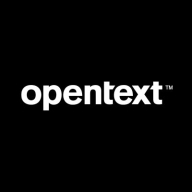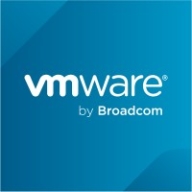

VMware Carbon Black Endpoint and OpenText Core Endpoint Protection are competitors in the endpoint protection category. VMware Carbon Black Endpoint seems to have an advantage with its advanced threat analysis and response capabilities, while OpenText Core Endpoint Protection is favored for its lightweight operation and lower costs.
Features: VMware Carbon Black Endpoint excels in behavioral monitoring, dynamic threat analysis, and interactive response, such as device quarantine and using cloud-based portals for investigation. Its visibility into attack chains and advanced data analysis provides a comprehensive approach to threat management. OpenText Core Endpoint Protection is appreciated for its minimal system resource usage, ease of use, and effective protection for mobile devices, making it nearly invisible to the user.
Room for Improvement: VMware Carbon Black Endpoint could enhance response times, integration with other security systems, and support for mobile devices along with reducing false alerts. OpenText Core Endpoint Protection would benefit from better reporting details, improved analysis features, and reducing false positives; users seek faster connections and more control over scanning individual files.
Ease of Deployment and Customer Service: VMware Carbon Black Endpoint offers flexible deployment options, suitable for private, public, and hybrid clouds, yet users experience varied support responsiveness. OpenText Core Endpoint Protection, generally used in public and hybrid clouds, is known for prompt customer service, though users sometimes encounter delays in issue resolution.
Pricing and ROI: VMware Carbon Black Endpoint is positioned as a premium offering with higher pricing due to its robust features, and is seen as providing justified value despite the cost. OpenText Core Endpoint Protection appeals to budget-sensitive buyers with its affordability and a solid performance-to-price ratio, making it an attractive option for those looking for cost-effective solutions.
| Product | Market Share (%) |
|---|---|
| VMware Carbon Black Endpoint | 1.8% |
| OpenText Core Endpoint Protection | 1.0% |
| Other | 97.2% |

| Company Size | Count |
|---|---|
| Small Business | 35 |
| Midsize Enterprise | 2 |
| Large Enterprise | 2 |
| Company Size | Count |
|---|---|
| Small Business | 31 |
| Midsize Enterprise | 9 |
| Large Enterprise | 30 |
OpenText Core Endpoint Protection offers cloud-managed endpoint security with AI integration, providing real-time protection and lightweight performance. It ensures low system impact, seamless cloud integration, and cost-effective security solutions for various devices.
OpenText Core Endpoint Protection is a comprehensive endpoint security platform utilized by managed-service providers for antivirus and firewall functionality across servers, workstations, and mobile devices. It employs AI for robust threat detection, integrating with cloud applications for real-time updates. Multi-layered security features include malware protection, network defense, and DNS protection. Although connectivity and threat reporting need improvement, this platform extensively supports remote device management and integrates efficiently with Active Directory policies.
What are the key features of OpenText Core Endpoint Protection?OpenText Core Endpoint Protection finds application in industries requiring stringent data protection and peace of mind over device security. Managed-service providers implement this for comprehensive antivirus and firewall features, safeguarding multi-device networks. It is particularly useful for DNS protection and integrating with Active Directory policies, enabling secure yet flexible operations across sectors.
VMware Carbon Black Endpoint enhances endpoint security with its robust EDR, threat detection, and live response features. The cloud-based architecture supports remote management and easy setup while behavioral monitoring and dynamic grouping minimize security risks.
VMware Carbon Black Endpoint is designed for those seeking comprehensive endpoint protection. With its cloud-based deployment, organizations experience streamlined remote control and simplified rollout processes. Its behavioral monitoring, incident response capabilities, and firewall integration deliver advanced security measures. Although it addresses many security challenges, areas like manual alert management, on-demand scanning, and integration with systems like AlienVault USM require refinement. Improved UI, EDR components, and flexible pricing models would enhance user satisfaction. On-premise deployment infrastructure and compatibility issues with some operating systems need attention. Enhanced reporting, container security, and multi-tenancy support are also essential for fulfilling industry needs. AI-driven analysis and threat isolation empower companies by fostering proactive management.
What are the key features of VMware Carbon Black Endpoint?
What benefits should users look for when evaluating VMware Carbon Black Endpoint?
VMware Carbon Black Endpoint finds extensive application in industries focused on stringent security requirements. Managed security service providers leverage its capabilities to deliver comprehensive protection to multiple clients worldwide. Organizations use it primarily for antivirus protection and incident management, integrating it with their existing security frameworks to strengthen endpoint visibility and real-time threat prevention. Its advanced detection and application control features make it a preferred choice in industries that prioritize robust security measures. However, it requires improvements in terms of system compatibility and customization flexibility to better serve diverse industry environments.
We monitor all Endpoint Protection Platform (EPP) reviews to prevent fraudulent reviews and keep review quality high. We do not post reviews by company employees or direct competitors. We validate each review for authenticity via cross-reference with LinkedIn, and personal follow-up with the reviewer when necessary.